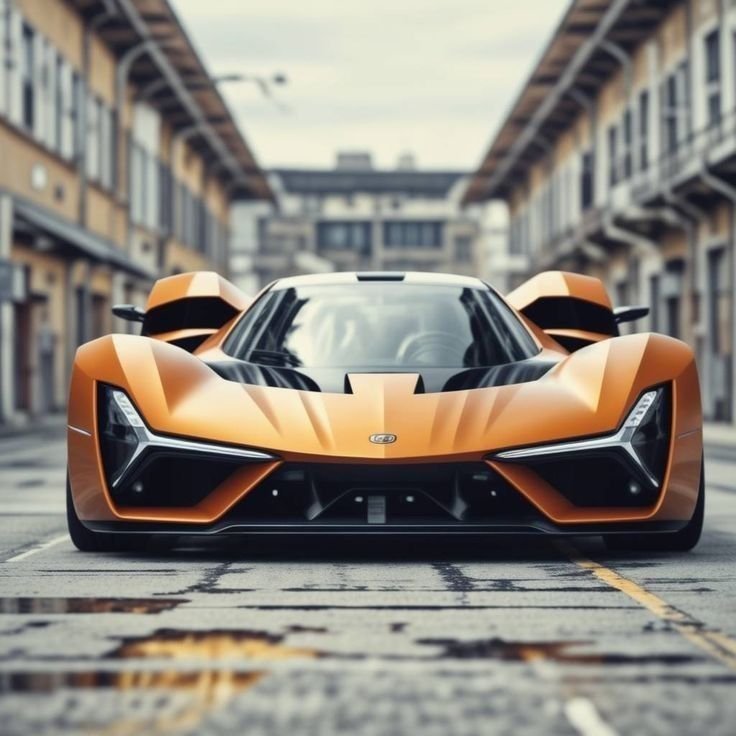
As we look into the future, the way cars are designed and built is rapidly changing. Not just the engines, batteries, and electronics, but also the interiors of cars are undergoing a revolutionary transformation. Car interiors are no longer just about comfort and aesthetics; they are evolving to incorporate advanced technologies, smart materials, and customizable features that offer a personalized experience for every driver and passenger. This article delves into the future of car interiors, focusing on the role of smart materials and the growing trend of customization.
The Evolution of Car Interiors
Traditionally, car interiors were made of basic materials like leather, fabric, plastic, and wood. While these materials served their purpose, they lacked innovation and adaptability. Over the past decade, however, there has been a shift towards more sustainable, comfortable, and technologically advanced materials. This shift is driven by several factors, including the rise of electric vehicles, advancements in smart technology, and a growing emphasis on sustainability and environmental impact.
What Are Smart Materials?
Smart materials are innovative materials that can change their properties in response to external stimuli, such as temperature, light, pressure, or electrical signals. These materials can adapt to different conditions, making them ideal for the dynamic environment inside a vehicle. Examples of smart materials include shape-memory alloys, electrochromic glass, self-healing polymers, and thermoelectric fabrics.
- Shape-Memory Alloys: These materials can return to their original shape after being bent or deformed. They are used in car seats, headrests, and other interior components to provide enhanced comfort and support by adapting to the body shape of different occupants.
- Electrochromic Glass: This type of glass can change its opacity in response to an electrical charge, allowing passengers to control the amount of light entering the car. It offers privacy, reduces glare, and improves energy efficiency by keeping the car cooler.
- Self-Healing Polymers: Scratches and scuffs are common in car interiors, but self-healing materials can repair themselves when exposed to heat or light. This helps maintain the interior’s appearance over time and reduces the need for repairs.
- Thermoelectric Fabrics: These fabrics can regulate temperature by absorbing or releasing heat, ensuring that car seats remain cool in summer and warm in winter. They also reduce the energy consumption required for heating and cooling, making cars more efficient.
The Role of Smart Materials in Car Interiors
Smart materials are set to revolutionize car interiors in several ways:
1. Enhanced Comfort and Well-being
Smart materials like shape-memory alloys and thermoelectric fabrics are designed to enhance comfort. For example, car seats made from smart materials can automatically adjust their shape to fit the body of each passenger, providing personalized support and reducing fatigue during long journeys. Similarly, temperature-regulating fabrics can maintain an optimal climate inside the car, regardless of external weather conditions.
2. Improved Safety
Safety is a top priority for car manufacturers, and smart materials play a crucial role in enhancing safety features. For example, materials with shape-memory properties can absorb impact during a collision, reducing the force experienced by passengers. Additionally, electrochromic glass can reduce glare from the sun or headlights, improving visibility and reducing the risk of accidents.
3. Sustainability and Environmental Impact
With increasing awareness of environmental concerns, the demand for sustainable materials in car interiors is growing. Smart materials like self-healing polymers reduce waste by extending the life of interior components, while lightweight materials contribute to fuel efficiency. Some manufacturers are even exploring the use of biodegradable and recycled materials, further minimizing the environmental impact of car production.
Customization: The Future of Personalized Car Interiors
Another major trend shaping the future of car interiors is customization. Modern car buyers are looking for vehicles that reflect their personal style and preferences. Customization allows drivers to choose the colors, materials, textures, and features of their car interiors, creating a unique and personalized driving experience.
1. Digital Configurators
Digital configurators are becoming a popular tool for car buyers, allowing them to design their car interiors online before making a purchase. These tools offer a wide range of options, from seat materials and dashboard finishes to ambient lighting and infotainment systems. Digital configurators provide a 3D visualization of the car’s interior, helping buyers see how their choices will look in real life.
2. Modular Interiors
Modular interiors take customization to the next level by allowing owners to change and upgrade different components of their car’s interior over time. For example, seats, panels, and storage compartments can be easily replaced or reconfigured to suit the driver’s needs. This flexibility ensures that the car remains functional and stylish, even as the owner’s preferences change.
3. Personalized User Interfaces
The rise of digital dashboards and touchscreens has opened new avenues for customization. Drivers can personalize their user interface by choosing themes, layouts, and shortcuts that match their preferences. Voice-activated controls and AI-driven systems can also adapt to individual driving habits, making the car’s interior feel more like a personalized cockpit.
4. Smart Surfaces and Ambient Lighting
Smart surfaces and ambient lighting are also popular customization features. Smart surfaces can change color or texture based on the driver’s mood or driving conditions, while ambient lighting can be adjusted to create different atmospheres inside the car. These features provide a sense of luxury and sophistication, enhancing the overall driving experience.
The Impact of Autonomous and Electric Vehicles
The shift towards autonomous and electric vehicles is another driving force behind the evolution of car interiors. With no need for traditional controls like steering wheels and pedals, autonomous vehicles offer a blank canvas for interior designers to create more spacious and comfortable environments.
1. Lounge-like Interiors
Autonomous vehicles allow for the reimagining of car interiors as mobile living spaces. Instead of a traditional seating arrangement, cars could feature lounge-like interiors with swivel seats, foldable tables, and even sleeping pods. This transformation is made possible by smart materials that can adapt to different functions and provide comfort and safety in various seating configurations.
2. Focus on Connectivity
Electric and autonomous vehicles are often equipped with advanced connectivity features, making the car an extension of the home or office. Interiors are designed to support seamless integration with smartphones, laptops, and other devices, ensuring that passengers can stay connected and productive on the go. This connectivity also enables over-the-air updates, allowing car interiors to evolve and improve over time.
3. Noise Reduction and Acoustics
Electric vehicles are quieter than traditional combustion-engine cars, highlighting the importance of interior acoustics. Smart materials can help absorb and dampen sound, creating a peaceful environment for passengers. This is particularly important for autonomous vehicles, where passengers may want to relax, work, or engage in conversation without unwanted noise interference.
Challenges in Implementing Smart Materials and Customization
While the future of car interiors looks promising, several challenges must be addressed before these innovations become mainstream:
1. Cost
Smart materials and high levels of customization can be expensive to produce, potentially increasing the overall cost of the vehicle. To make these features accessible to a broader audience, manufacturers must find ways to reduce production costs without compromising quality.
2. Durability and Maintenance
Smart materials, while innovative, need to be durable and easy to maintain. For example, self-healing polymers must withstand everyday wear and tear, while electrochromic glass should function reliably over the car’s lifetime. Ensuring the longevity and reliability of these materials is essential to gain consumer trust.
3. Compatibility with Existing Technologies
Integrating smart materials and customizable features into car interiors requires compatibility with existing automotive technologies. Manufacturers must ensure that new materials and systems work seamlessly with current safety, connectivity, and infotainment technologies.
The Road Ahead
The future of car interiors is undeniably exciting, with smart materials and customization leading the way. As technology advances and consumer demands evolve, we can expect to see more innovative and personalized interiors that cater to individual needs and preferences. Car interiors will no longer be static and uniform but dynamic spaces that offer comfort, safety, sustainability, and a personalized experience.
The adoption of smart materials and customization in car interiors represents a significant step forward in automotive design. It aligns with broader trends in the automotive industry, such as the shift towards electric and autonomous vehicles, and reflects a growing emphasis on sustainability and user experience. While challenges remain, the future of car interiors promises to be as dynamic and innovative as the vehicles themselves.
Conclusion
In conclusion, the future of car interiors is a fascinating blend of technology, design, and personalization. With the integration of smart materials and a focus on customization, car interiors are set to become more comfortable, safe, sustainable, and uniquely tailored to each driver and passenger. As we move forward, these trends will not only enhance the driving experience but also redefine our relationship with vehicles, making them more than just a mode of transportation – they will become personalized spaces that cater to our lifestyle and needs.
By embracing these innovations, the automotive industry is paving the way for a new era of mobility, where car interiors are as smart, adaptive, and personalized as the technology that powers them.







